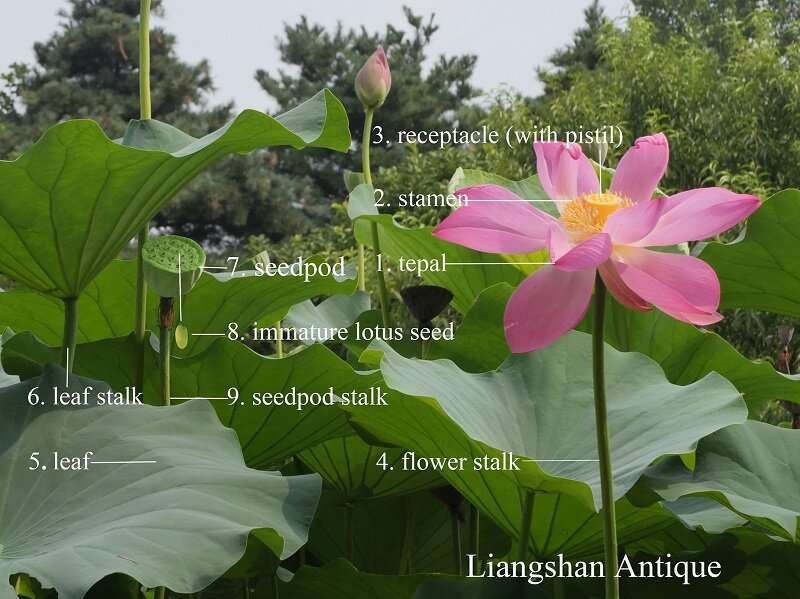Different parts of antique lotus. Credit: Wang Xiaohan
Lotus (Nelumbo) is an important aquatic ornamental plant, with high edible and medicinal value. It has been cultivated in China for more than 3,000 years. Antique Lotus is a special group of lotuses. It is formed by the germination of ancient lotus seeds buried underground for hundreds or even thousands of years. With its unique historical and cultural significance, Antique Lotus is favored by people all over the world, but little research has been done on its economic value.
Prof. Wang Liangsheng's group from the Institute of Botany of the Chinese Academy of Sciences compared the antioxidant activity of extracts from different parts of seven Antique Lotus plants. They identified the parts with the greatest economic development potential and then analyzed their polyphenolic components by ultra-performance liquid chromatography coupled with triple-quadrupole tandem mass spectrometry (UPLC-TQ-MS).
The researchers found that lotus seedpods had significantly higher antioxidant capacity than other parts by FRAP, ABTS, and ORAC assays, which was closely related to their total polyphenol content. The seedpods were also rich in proanthocyanidins and flavonols.
In this study, 51 polyphenols were identified by UPLC-TQ-MS analysis. Of these, 27 compounds were identified for the first time in lotus seedpods, including 20 trimers, five dimers and two tetramers of proanthocyanidins.
The researchers also found that total proanthocyanidins explained 70%–90% of the different antioxidant activities in seedpods. Meanwhile, the content of proanthocyanidin trimers showed the strongest correlations with the antioxidant activity.
In addition, the seedpods of Nelumbo nucifera "Pulandian Antique" had the highest total polyphenol content and the best antioxidant activity. It showed advantages in the commercial development of products.
"This study provided a fundamental reference for the study of polyphenols in lotus. These results further confirmed the antioxidant activity of lotus seedpod extracts, which have promising prospects for use as food and dietary supplements," said Prof. Wang, correspondent author of the study.
The results have been published in Food Chemistry, titled "Analysis of proanthocyanidins and flavonols in the seedpods of Chinese Antique Lotus: A rich source of antioxidants."
More information: Xiaohan Wang et al, Analysis of proanthocyanidins and flavonols in the seedpods of Chinese Antique Lotus: A rich source of antioxidants, Food Chemistry (2023). DOI: 10.1016/j.foodchem.2023.135756
Journal information: Food Chemistry
Provided by Chinese Academy of Sciences
























